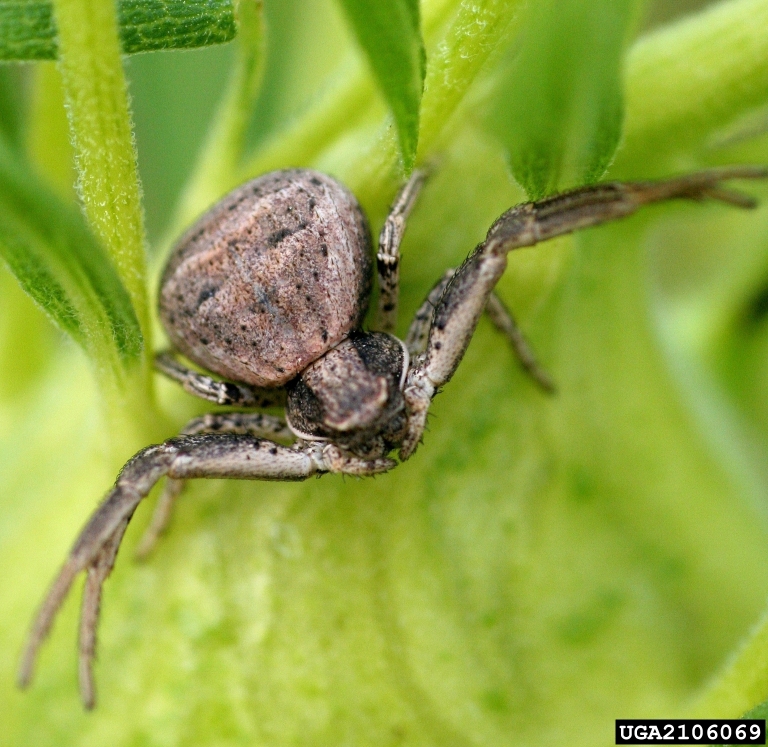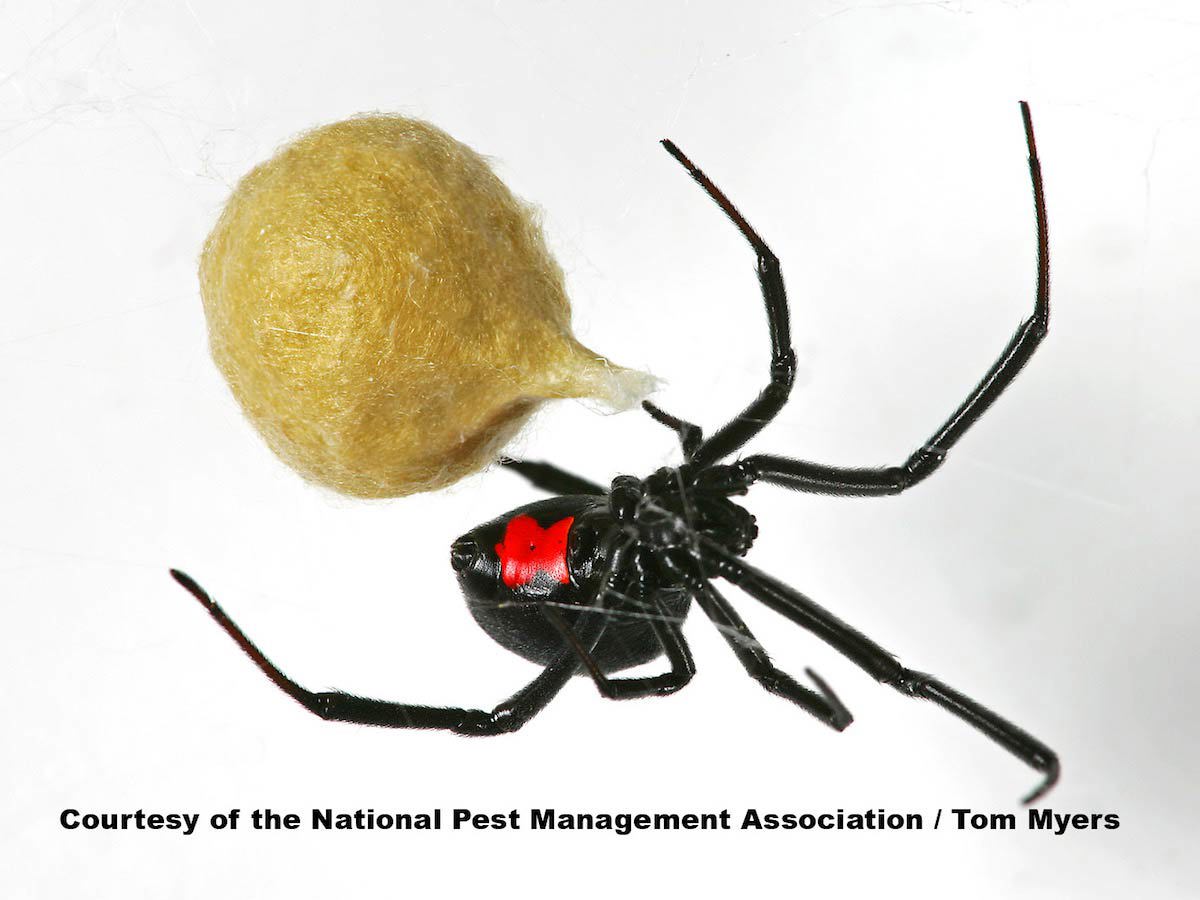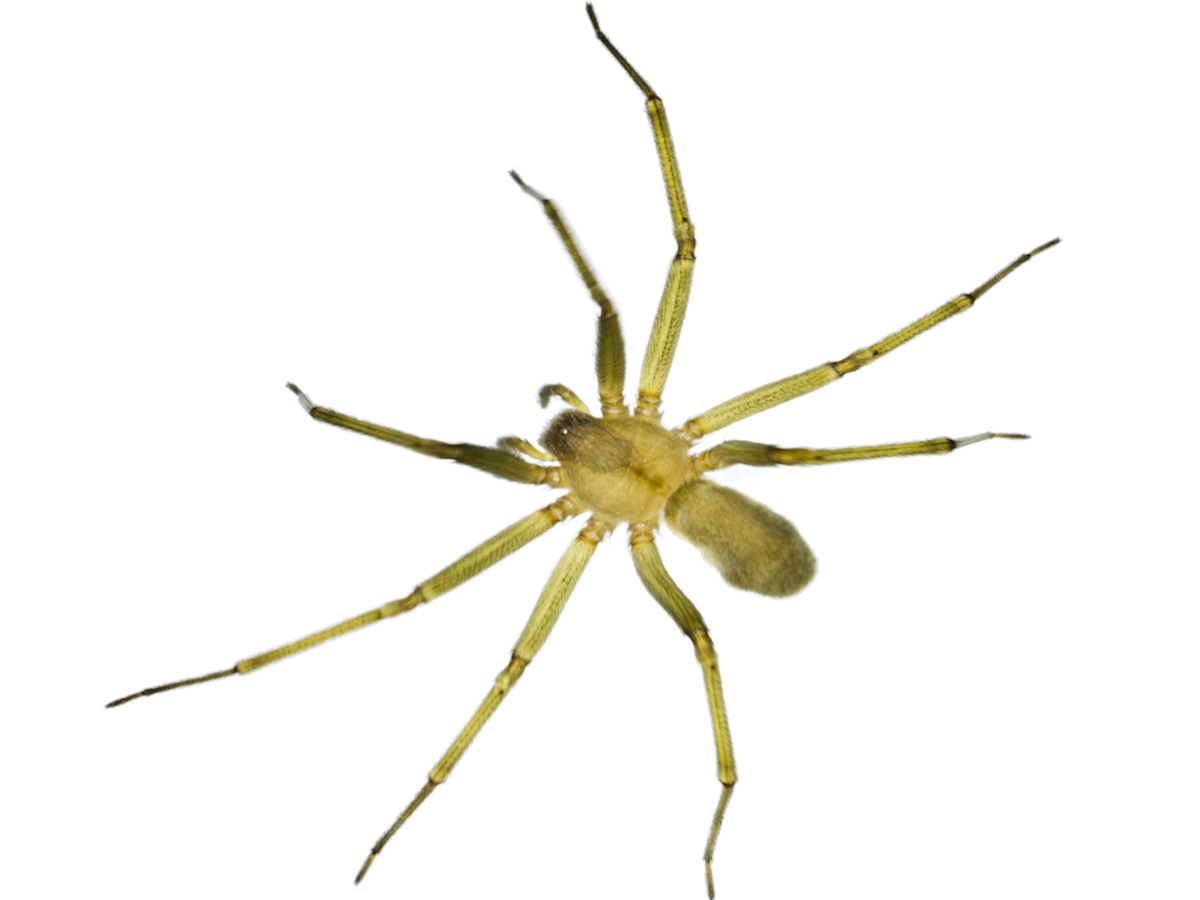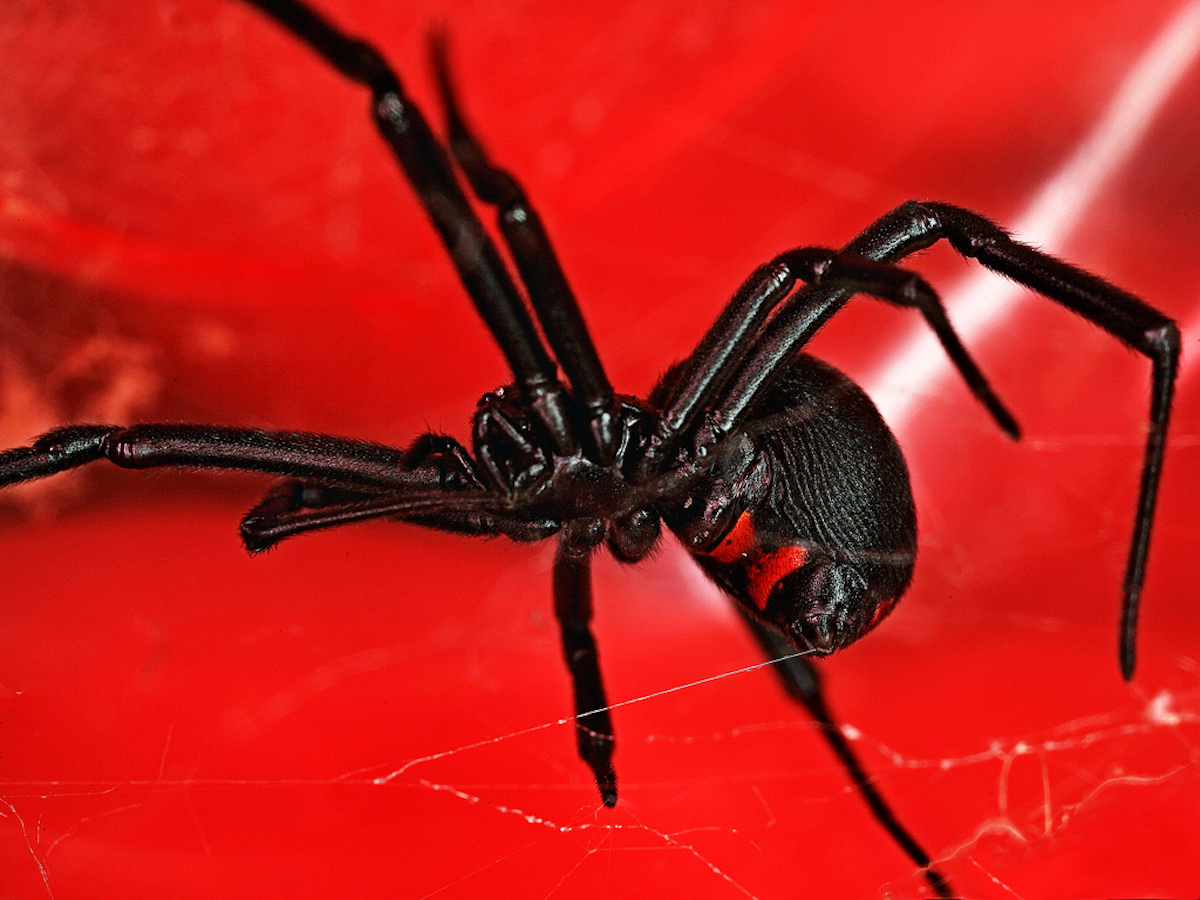Crab Spiders Thomisidae

Crab Spiders Identification
Color: beige, brown, black, white, or yellow
Size: 1/10” – ½”
Legs: 8 (2 longer pairs in the front, 2 shorter pairs in the back)
Antennae: No
Shape: Flattened round or oval shaped
Region: Everywhere except desert regions
What is a Crab Spider?
Crab spiders are a group of spiders that get their name from holding their front two pairs of legs out to the side, like the way a crab holds its claws.
North America is home to over 200 species of crab spiders, including the yellow crab spider, otherwise known as the Goldenrod crab spider. Worldwide, there are over 2,000 species of crab spiders found on almost every continent, most notably the white crab spiders of Australia. If you’re looking for information on how to identify or get rid of crab spiders, read on.
What Do Crab Spiders Look Like?
Crab spiders have a very distinct shape. They can have flattened, round, or oval shaped bodies stretching one-tenth to half an inch in length. Their front two pairs of legs are noticeably larger than their back two, and are typically opened wide, so they can easily grab prey.
The color of a crab spider varies depending on the species and their environment. Many crab spiders are colored beige, brown, or black, but those that hunt around flowers are usually more brightly colored. Some species can even change colors to camouflage their body to better match the surface they are hunting on. However, this color change process is slow and usually occurs over a period of days.
A white crab spider fits the same description as other crab spiders, but is usually colored white or yellow to match whatever flower they are currently using to hide. The Goldenrod or yellow crab spider is a bit larger than the white crab spider and prefers to hide in the bright yellow Goldenrod flower from which it gets its nickname.
While venomous towards insects, a crab spider bite does not pose any danger to humans. Crab spider attacks on humans are very rare. Even if they do bite a human, most crab spiders have mouthparts too small to break the skin. If they do, the bites are comparable to a bee sting, with no lasting side effects.
If you suspect a spider has bitten you, you should seek medical attention if your reaction continues to worsen for more than 24 hours.
Crab spiders are not known for biting humans or pets. They are a beneficial part of an ecosystem for both humans and animals alike, because they take out pesky or harmful insects that spread disease. Crab spiders eat:
- Bees and other pollinators
- Mosquitos
- Flies
Unlike many other spiders, crab spiders do not spin webs. They are patient predators that hide in plain sight until prey gets within reach. Insects have to get very close, well within 20 centimeters, for the crab spider to recognize it as prey or predator. Because of their poor eyesight, crab spiders are very active during the day.
Once prey gets close enough, crab spiders use their long and powerful front legs to quickly bite and immediately paralyze the unsuspecting insect.. Since they paralyze their prey, they oftentimes consume insects much larger than their own body.
If a larger foe happens to knock the crab spider off its perch, it will typically use a drop line to crawl back to its hiding spot. Crab spiders are always on the hunt for insects but have also been known to feed on pollen and nectar from the flowers they hide in.
Male crab spiders are much smaller than females. There is much left unknown about the crab spider reproduction process, but it is thought that males use airborne pheromones to find female mates. Once located, the male courts the female by covering her loosely with strands of silk.
The female then finds a safe location to lay eggs.If no safe area can be located, she makes her own protection using silk and nearby leaves. The female crab spider will protect her egg sac until they hatch, then dies shortly after.
Because they can camouflage themselves from prey and predators, crab spiders can be found in almost any ecosystem. Besides a barren desert or a cold mountaintop, there are not many places a crab spider cannot be found. Crab spiders inhabit:
- Grasslands
- Tropical climates
- Swamps
- Woodlands
Crab spiders much prefer outdoor areas to being indoors. If you suspect a crab spider is nearby, you should first look for egg sacs in nearby flower petals or leaves. A protective layer of white, silky material may indicate that a crab spider is in the area. Also, be on the lookout for exoskeletons, as crab spiders shed their exoskeletons multiple times before reaching adulthood. If you find any exoskeletons, it would suggest a crab spider has been in that location.
Since they rarely travel inside of a house, it should not be too difficult to get rid of crab spiders. To ensure your house is free of crab spiders:
- Inspect plants and flowers before bringing them indoors
- Keep entrances to your house clean of litter where spiders can hide
If a more serious solution is needed, contact a licensed pest control professional for more tips on how to get rid of crab spiders.





